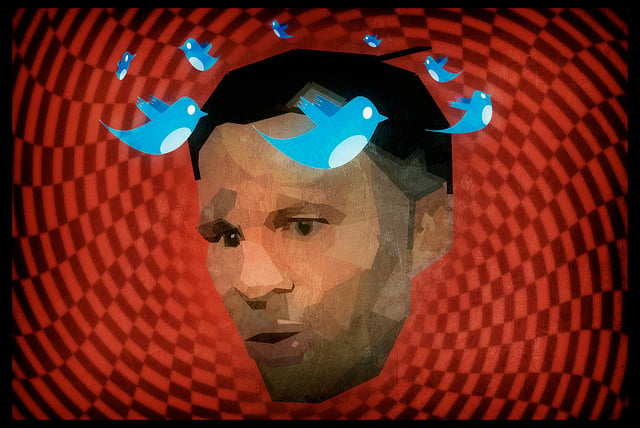
Is It Possible To Keep Clients Happy In PR? Managing The You Booked It, You Fix It Mindset
Working in the field of public relations can be described as putting on an army helmet each day and tiptoeing carefully across a minefield. Sometimes as publicists we are able to do so quite successfully, and it’s all sunshine and lollipops as we land that perfect media placement for our clients. Then there are those dreaded days when you unsuspectingly step on one of those mines, and a media contact runs a horrific story for your client that you had absolutely no way of anticipating. You pop it open because the placement is finally here. Then, as you read, your heart rate increases and all you can repeatedly say is, “Oh nooo!”
A negative spin article on a positive story pitch will then fill the next two days for you with damage control on phones with editors demanding a redaction, and coddling calls and emails with your client. You find yourself repeating phrases like “This is not at all what we pitched”, “They twisted this story”, and “I’m as mortified as you are; let us see what we can do”.
Because a publicist or PR Firm is essentially the paid middleman on the front lines of communication, the client’s automatic reaction to a bad media placement or review is “You booked this, you fix it.” However, any seasoned publicist will tell you that mindset is 100 percent incorrect. So how do you keep your clients happy at all times, even during rough patches like these? Is it even possible?
How Things Really Work
Though a PR firm is paid to pitch stories to the media and scout the right placement contacts for clients, contrary to popular belief, we don’t toss up our PR fairy dust to make that positive story appear. While we are our client’s biggest cheerleader, we don’t have the final say in what, when, or how a story runs. This can be quite frustrating when a story has delays, gets canned, or when a negative spin angle is suddenly placed on our hard work. If a publicist has done their job effectively, they have (1) thoroughly researched the media contact beforehand to make sure they do not harbor any intense hatred for the subject at hand, (2) pitched a seamless story with a very nice angle for the client, (3) booked the interview, and (4) followed up to ensure that the placement does hit. After all of that, we all know that there is a black hole that is entirely out of our hands between the client interview and the time the writer chops up their story with their editor. It is an exciting time for the client, but it can be a terrifying waiting game for us.
Setting Client Expectations
The “You booked it, you fix it” mindset can truly be detrimental to a publicist/client relationship. However, it can be nipped in the bud early if you teach your clients the full process. Don’t allow them to think that you have full control over any story, because that is simply incorrect. When you educate your client on the PR process and the many hands a story has to touch before it is published, the ride will be a much smoother one.
Train Your Clients
Media training for your client is of the utmost importance. This means taking the time to sit with them in person or on the phone to hone their pitch. I often advise my clients that the most important thing is to always steer drifting questions back to their business, product, or positive points during an interview. If a writer goes off topic, stay clear and turn back. Clients can sometimes be a handful and can easily talk themselves into a negative spin article if you don’t train them not to. The media contact will perk up like, “Wait, what was that he said?” then will proceed to do some side digging or generate an opinion outside of the positive angle you pitched. Those moments are to be avoided at all costs. As a publicist, I am powerless to fix anything if a client has run off at the mouth and buried themselves during an interview. Let your clients know that once you have let them loose in an interview, you are truly passing the baton and expecting them to positively finish the race. Then close your eyes, set your client-child loose, and hope that they have remembered all you taught them.
Handling Media with a Long- Handled Spoon
Working with media is exactly like handling a hot pan. Put on those oven mitts so that you don’t get burned, and handle them carefully! Be sure to set yourself and your client up for success by doing your research prior to scheduling the interview to see if the media contact has any previous history of negativity on the subject matter. Also try to get the questions for the interview in advance from the media contact in order to effectively prep your client and ensure a successful interview.
Maintain Minimal Interaction
Your client emailed or called the media contact after the interview to “follow up?” What are they thinking! Stop that before it starts. Have minimal contact after the interview. Do not allow your client to call or email the media contact, and you, as a publicist, should only communicate when necessary as to not piss them off. These people have other deadlines and other stories and honestly do not have to run yours. Send a thank-you and any photos or additional information that they need promptly after the interview. If the piece takes too long to run, then sending one email asking for a timeline confirmation is fine. When media contacts are angered, you have officially jumped directly on to the land mine, and it is important to get that point across to your clients early on.
Be Honest with Your Clients: “Hey, Your Business Kind of Sucks!”
Do not make your job any harder than it has to be. That’s what you are doing if you notice there are problems with a product that you are pitching to be reviewed, or if a business has a few holes that you recognize and don’t speak up. Your client’s reputation is your responsibility; so let them know to fix these things or agree on a plan of action to eliminate those items before pitching, even if it means delaying the PR campaign. Also remember that your reputation is also on the line with the media if you pitch unworthy products, businesses or services.
Consistent Work and Communication
There is no better way to change the “You booked it, you fix it mindset” than to have consistent ongoing communication with your clients. This includes what you are pitching, whom you are pitching to, and inviting your client’s feedback. Total visibility into the processes does not enable your client to run off and do your job on their own, which is what many publicists believe. Rather, it develops a pattern of trust and allows them to see the work that goes in to each and every placement. If you are consistently working at a high level and landing other positive media placements, it will eliminate any undo pressure or expectations when a negative placement arises.
Original Article Featured In http://talkbusinessmagazine.co.uk/can-you-keep-clients-happy-in-pr/

 If you don’t, look out. It could take a bite out of your brand, reputation and damage your integrity — when you least expect it.
If you don’t, look out. It could take a bite out of your brand, reputation and damage your integrity — when you least expect it.













